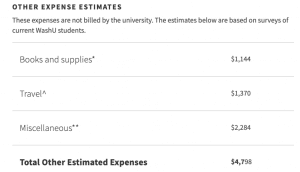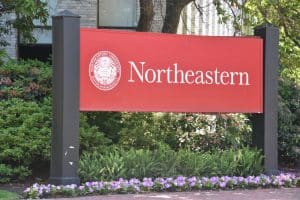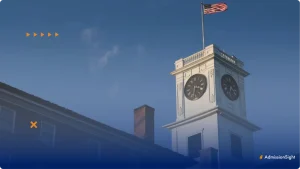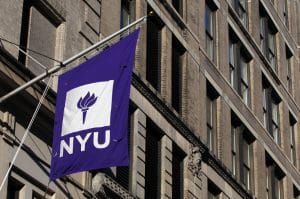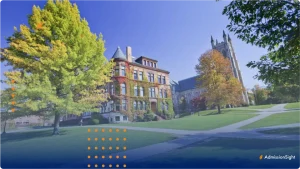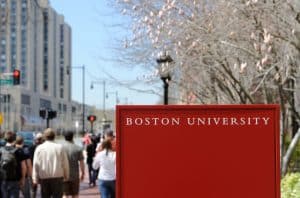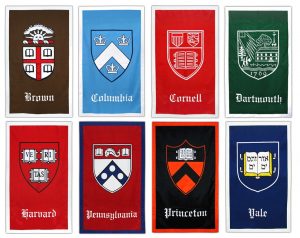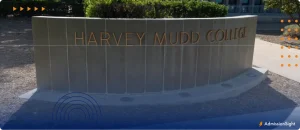WashU Acceptance Rate: Admissions Statistics
Shortcut to sections offered for WashU prospective students:
Successful Applicant Profile
- Demographics
- Majors
- SAT/ACT scores
Entry Requirements
- Tuition
- Scholarships
- Checklist of Application Requirements
- Application Deadlines
What Should You Expect
- Student Life
- Notable Alumni
Located in both St. Louis County, Missouri, and Clayton, Missouri, Washington University in St. Louis – WashU for short – is a private research University and is known as one of the most prestigious universities in the United States that is not included in the Ivy League.
WashuU is one of the most selective private research universities in the United States and the WashU acceptance rate is just 13%. That means that out of every 100 students that apply each school year, only 14 of those students are accepted.
WashU is a highly selective and fairly small private school, with less than 8,000 undergraduate students currently studying there and a similar number of postgrad students also studying there.
Given the school’s commitment to keeping classes small and the student-to-faculty ratio low (and we mean really low, it’s currently a highly impressive 7:1 ratio), the WashU acceptance rate should really come as no shock!
If attending Washington University in St. Louis is your dream for your undergraduate years, you are going to want to make sure that you are able to beat the odds by scoring fantastic grades in high school, earning top scores in standardized tests such as the SAT and ACT, investing your time in extracurriculars that you are passionate about and are able to assume important roles of leadership in.
When it comes to everything else that you will need in order to beat the odds of the WashU acceptance rate, you are likely going to need all the help you can get!
That’s where we come in. Here in AdmissionSight, we make it our job to help the very best students in the United States get into the most prestigious and most competitive schools in the country.
We offer high school students the tools and resources that are necessary to make the very most out of your strengths and overcome any weaknesses that may exist in your admissions profile.
For starters, when it comes to Washington University, the vast majority of students who are able to find themselves within that 14 percent WashU acceptance rate, you are going to want to be able to meet (or ideally even exceed) the average standardized test scores and grade point averages.
When it comes to the SAT, the average score of students who are accepted is an impressive 1485 out of 1600. For the ACT, the average score is a very strong 33 out of 36. For the GPA, students average an (unofficial) GPA of a perfect straight-A 4.0.
From those numbers alone, you can get a really good idea of how just competitive this school is and just how brilliant your fellow students will be once you get in and enroll!
So, let’s put off breaking down those scores and grades a bit deeper for a little bit longer. Now it’s time to go over what a successful application profile to Washington University looks like and more!
Successful Applicant Profile
Washington University offers a very diverse list of options when it comes to programs and courses for undergraduate students. In fact, WashU offers more than 90 fields of study and over 1,500 unique courses for the student to invest their time and energy in.
To give you an idea of just how committed students at WashU are to expanding their worlds through education, consider the fact that 80% of students at WashU pursue multiple majors and/or minors.
On top of that, students can study abroad in more than 50 countries across the world! But what about bringing the diversity to the home campus of WashU?
More and more, students who be looking at the diversity of schools that they are interested in. Not only does studying alongside a diverse student body encourage students to get out of their comfort zone and meet people who come from different backgrounds, belief systems, and socioeconomic backgrounds.
WashU is above average compared to thousands of schools in the United States when it comes to ethnic, gender, and geographic diversity.
When it comes to ethnic diversity, here is an in-depth breakdown of the kinds of people who will meet, learn with, befriend, and more at WashU!
- 2% of the students at WashU are white
- 6% of the students at WashU are Asian
- 5% of the students at WashU are Hispanic/Latino
- 1% of the students at WashU are Black or African American
- 6% of the students at WashU are a non-resident alien
- 6% of the students at WashU are ethnically unknown
As you can see, there is a great blend of different types of students at WashU. There is no doubt that the school considers it a priority for people to be interacting with people who don’t look exactly like them every day! That will help you grow not only as a student but as a person as well. After all, isn’t that what college is all about?
When it comes to gender diversity, WashU is one of the more gender-diverse universities in America, with its disparity between men and women being far lower than the national average. In fact, women far outweigh men at WashU and makeup 53.3% of the student body compared to men taking up the remaining 46.7%.
Finally, WashU is also home to thousands of international students, which is quite impressive considering how small the school is overall.
Back in 2013, WashU was home to over 2,200 international students, no, over 3,000 international students call WashU home.
Amongst 1,288 schools that were evaluated in a poll, WashU came in as the 63rd most popular home, and at least 46 countries are represented on the Washington University campus. Some of the countries that are most represented at WashU include the following:
- China
- Ghana
- Canada
- Italy
- Japan
- Kenya
- Nepal
- Nigeria
- Singapore
- South Korea
- Taiwan
What are the most common programs?
Without a doubt, WashU can be your dream school without you even really knowing much about it but gathering as much information as possible about the school of your dreams is an important way to make sure that is really is going to be the best fit possible.
One great way to learn about how you may fit in a school is to see what the most popular programs at that school are. So, here are some of the top programs currently taught at WashU.
- business
- engineering
- biology
- social sciences
- interdisciplinary studies
- history
- earth and planetary sciences
- philosophy
- economics
- mathematics
As you can see, many of the most popular programs at Washington University fall under the STEM umbrella. That being said, it is also clear that many of the most popular programs or in the humanities. simply from that list, it should be clear to you just how diverse the kinds of programs at Washington University are for the students who are enrolled there.
But what about the kinds of studying that students have to do during their high school years in order to improve their chances of beating the odds of the WashU acceptance rate.
What is the average SAT/ACT scores and GPAs of admitted students?
The fact that the WashU acceptance rate it’s just a few points higher and 10% should give you a really good idea about how hard it is to get into this school.
Students who want to get accepted to Washington University I’m going to have to make sure that they are amongst the top students in their classes when it comes to their GPA as well as the scores that they receive on standardized tests such as the SAT and ACT. we’ve briefly broken down those scores but let’s go into them with a little bit more depth so that you get a better understanding of what you will be expected to accomplish in order to get into Washington University.
As the years go on, schools will only continue to become more competitive, so make sure to assume that the scoring requirements next year are going to be even higher than they are this year and so on and so forth!
For the SAT, your goal score to increase your chances of getting into WashU should be 1485. If you score below that, your score will be working against you when it comes to your chances of getting into WashU. Beyond that, if you score above 1570, the 75th percentile score at Washing University will significantly improve your chances of getting in!
Here is a breakdown of the different sections and score goals that you should work towards to get in order to get into WashU.
For the ACT, the average score of students who are admitted to WashU is a 33 out of a 36. If you score below a 33, it means that your score is going to working against you when it comes to beating the odds. If your child is able to score above a 34, the 75th percentile score at Washington University, the ACT score will certainly help your chances of getting in.
Here is a breakdown of the different sections and score goals that you should work towards to get in order to get into WashU.
Finally, when it comes to the GPA of students who get into WashU, you will want to get very close to, or even above a 4.0. If you are worried about your ability to score that great of a GPA, some of the best ways to get a 4.0 or above is to take AP Courses or weighted honors courses.
AP courses are not only valuable thanks to the fact that they come with weighted grades, but also because scoring well on AP exams can help high school students earn college credits before even stepping on campus!
Entry Requirements
As is the case for many of the most prestigious and competitive schools in the United States, WashU comes with a pretty hefty bill. When you are deciding what your dream school truly is, you are going to have to take cost into account at every step of the way.
After all, it is important for you to figure out what your options are when it comes to attending the school that is right for you while not forcing yourself to go into tens of thousands of dollars’ worth of student loan debt.
So, let’s break down the cost of WashU as well as the financial aid options they offer their students.
How much does it cost?
The school’s official site has broken down the costs that are related and unrelated to school that students will likely have to make while attending. Remember, the fact that WashU is a private school means that students will face the same fees no matter if they are residents of Missouri or not.
What kind of financial aid is available?
There is no doubt that WashU is an expensive school. Luckily, the school offers ample financial aid. Scholarships and grants for all undergrad students come out to an average amount of just under $35,000 per student. Just under 50% of the total undergrads at WashU receive financial aid of some kind.
A total of about 3,600 students received that average financial aid amount of $35,000. Clearly, if you are worthy of attending WashU and have beaten the odds of the 13% WashU acceptance rate, the school will find a way to get you the money that you need in order to attend.
What are the application requirements?
While every school’s application process is somewhat similar, there are specific aspects of your application process to WashU that you will want to absolutely be prepared for and comfortable with if it is indeed your dream school.
While doing your own research on this subject is always a good idea, here at AdmissionSight we want to help all high school students be as best prepared as they possibly can be! For that reason, we have briefly broken down the application requirements that the school will have to see in order to consider you for admissions.
When it comes to transcripts, this is what WashU wants to see out of high school applicants:
- 4 years of English
- 4 years of mathematics (architecture, business, and engineering strongly recommend calculus)
- 3-4 years of laboratory science (engineering recommends chemistry and physics)
- 3-4 years of history or social science
- At least 2 years of the same foreign language since the ninth grade
- The College of Arts & Sciences recommends both chemistry and physics for students who plan to do coursework in pre-medicine or the natural sciences.
In terms of the required material for your application, here is what WashU is expecting to receive.
- Grades and class rank (if your school ranks students)
- Counselor and teacher recommendations.
- Essays
- Applicants will submit a supplemental essay (of 250 words) in addition to the Common Application or Coalition Application essay. This allows students to further express their interest in their academic area of choice.
- Each undergraduate division at WashU provides a number of four-year scholarships that range up to the full cost of tuition. Students are selected as finalists for these Academic Scholarships based on a review of the admissions application with particular attention to the WashU supplemental essay.
- Extracurricular and community activities
- Standardized test scores. See their one-year test-optional policy for applicants in 2021.
- Either the SAT or ACT, writing is not required.
- SAT Subject tests are not required.
- Test results from any of your high school years are acceptable.
- We consider only the highest individual scores, whenever they occurred.
Application deadline
The truth is that knowing when you need to submit your materials is just as important as knowing what you need to send in. After all, even the greatest application isn’t going to help you if you submit it too late!
So, here are the application dates and deadlines for WashU.
What to Expect
One of the best ways to get an idea of what kind of student experience you can expect at a given school is to ask current or former students about their experience.
While we won’t be putting you in touch with WashU students, we have gathered some great reviews from current students so that you can get a good idea of what those who attend WashU have to say about it!
“My WashU experience has been incredible! The campus became home within minutes of arriving. Academics are #1 always, which can be tough, but there are plenty of extracurricular activities and sports to diversify your lifestyle,” one said.
“A WashU education may seem impossible to attain, but the people here are willing and happy to work with you to make it possible for you,” another said. “I have found such a great community through student groups, faith organizations, and academic departments. There is so much support if you are willing to become invested.”
Famous alumni
When a school is as prestigious as WashU, you can absolutely expect there to be some famous alumni who once walked the halls that you are hoping to one day walk! Here are some of the most famous men and women who studied at WashU:
- Tennessee Williams, writer
- Pooja Kumar, television show host
- Mary Wickes, actress
- Robert L. Behnken, astronaut
- Harold Ramis, comedian, director
- Phyllis Schalafly, activist
- Peter Sarsgaard, actor
If your goal is to one day see your name amongst those great men and women, you are going to have to first get into WashU!
With great grades and test scores, you should be able to do just that. Here at AdmissionSight, we make it our goal to help the top students achieve their collegiate goals. If your dream school is Washington University, we will do all we can to help you achieve that goal!







